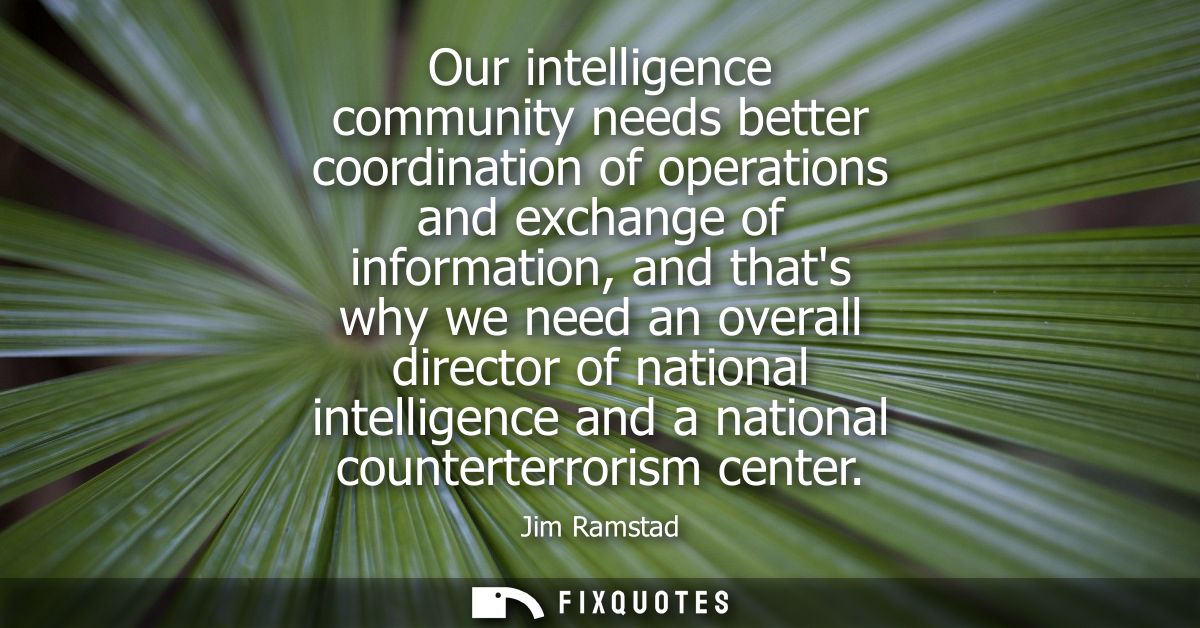"Our intelligence community needs better coordination of operations and exchange of information, and that's why we need an overall director of national intelligence and a national counterterrorism center"
About this Quote
The statement highlights a recognition of fragmentation within the intelligence community, acknowledging that separate agencies often work in isolation, resulting in inefficiencies and overlooked information. Such silos can hinder national security, especially in the modern era where threats like terrorism evolve rapidly and cross jurisdictions. The reference to improved coordination and information exchange underscores a key lesson from prior intelligence lapses, where important pieces of knowledge remained dispersed and unshared, preventing timely and effective responses.
To address these challenges, the appeal for the creation of a director of national intelligence reflects the necessity for a central authority who can oversee and integrate the activities of all intelligence agencies. Such a role aims to break down barriers between organizations, standardizing communication channels and ensuring that relevant intelligence is pooled and analyzed comprehensively, rather than in fragmented or competing streams. The director’s function is strategic, providing unified guidance, allocating resources according to emerging priorities, and holding disparate agencies accountable to shared goals.
The push for a national counterterrorism center aligns with this vision by proposing a dedicated hub for the synthesis, assessment, and strategic handling of terrorism-related intelligence. This center serves as a focal point where information from various sources converges, enabling the detection of patterns, threats, and vulnerabilities that might otherwise remain undetected if left siloed within specialized agencies. It positions counterterrorism as a collective, national priority demanding coordinated vigilance rather than isolated endeavors.
The overall suggestion reflects the imperative for adaptability in national security thinking, moving from compartmentalized models towards integrated structures capable of agile, unified responses. This proactive organizational overhaul is designed to anticipate and counteract sophisticated threats through synergy, collaboration, and seamless information sharing, ultimately working to safeguard the nation more effectively.
More details
About the Author

